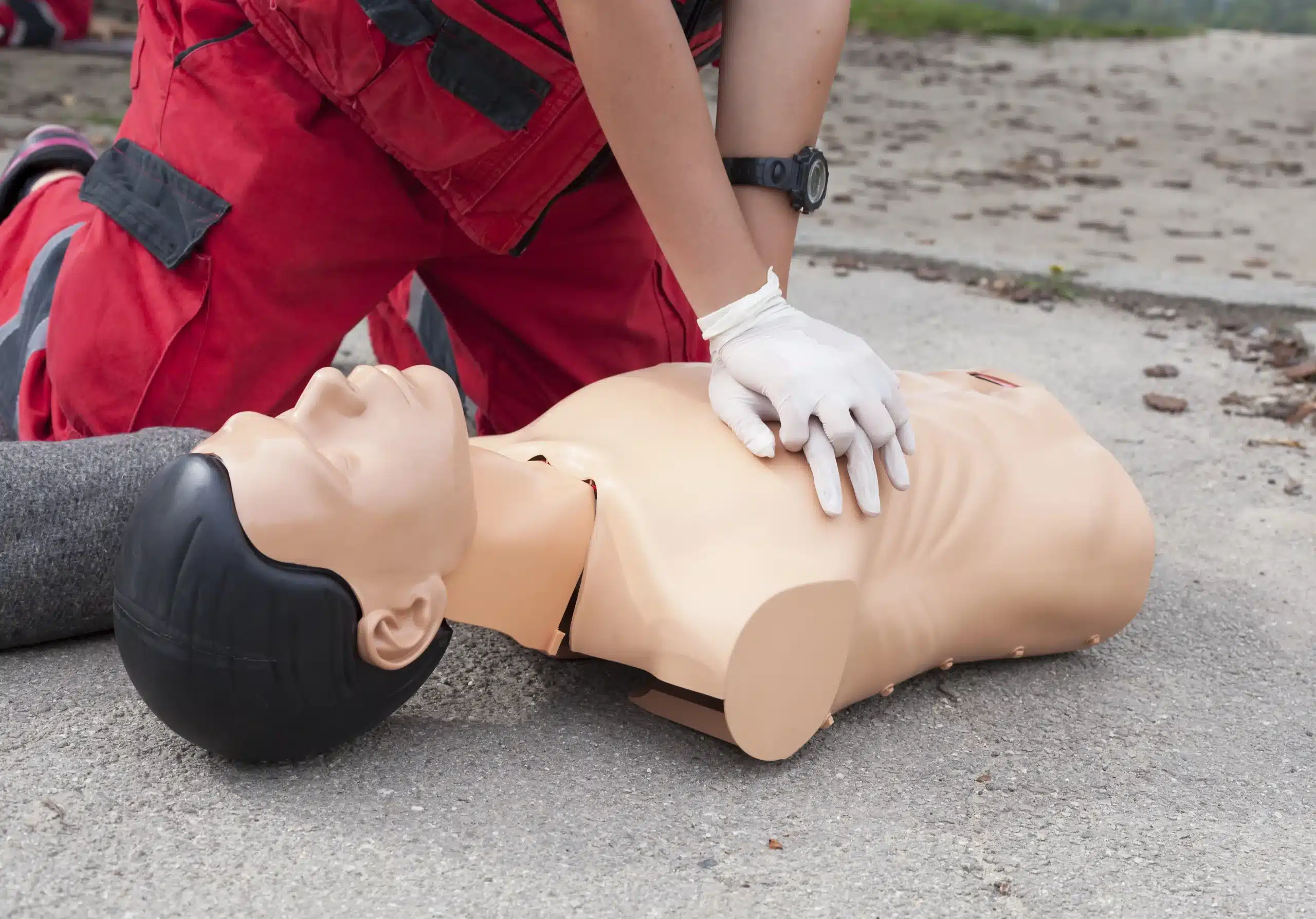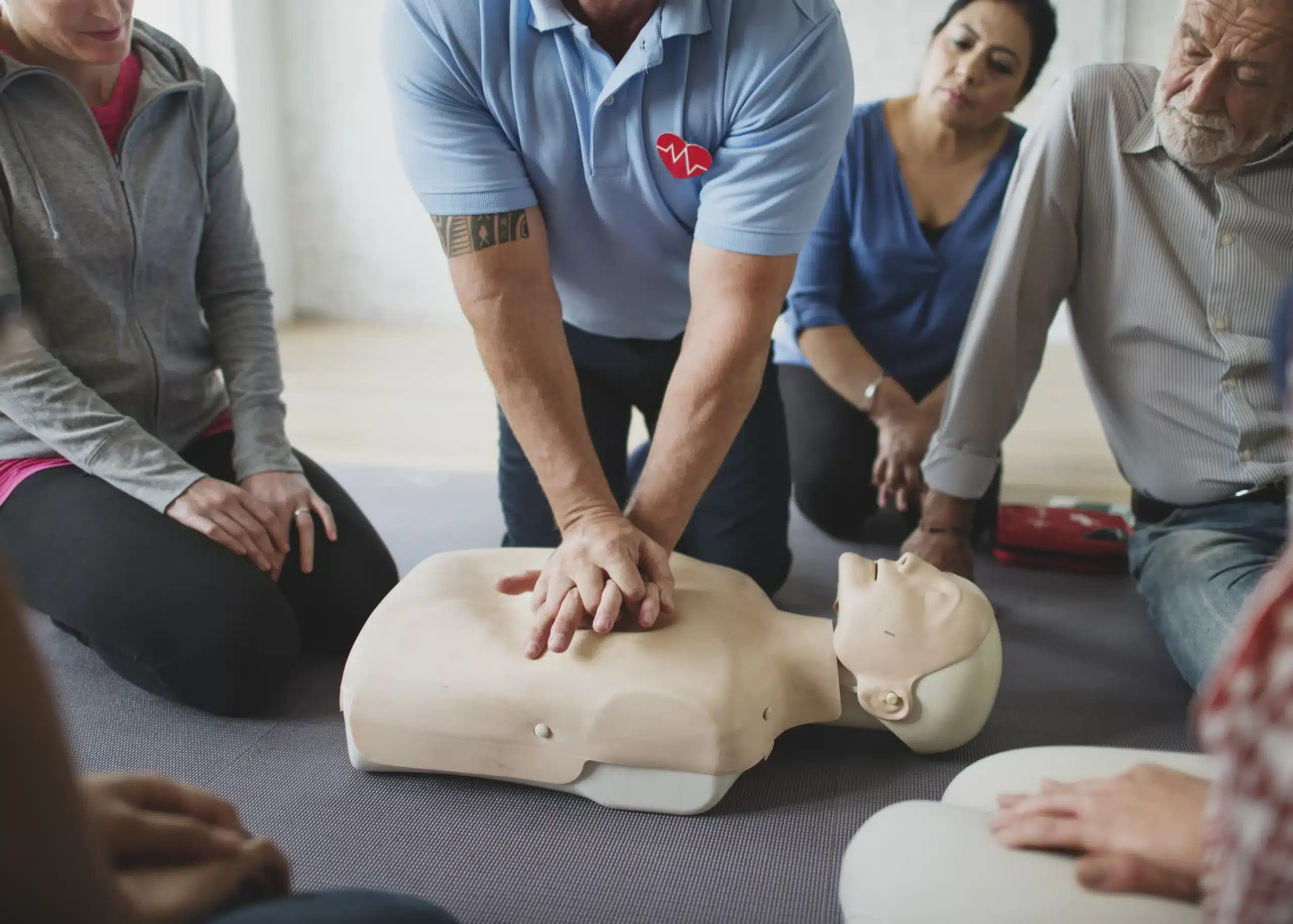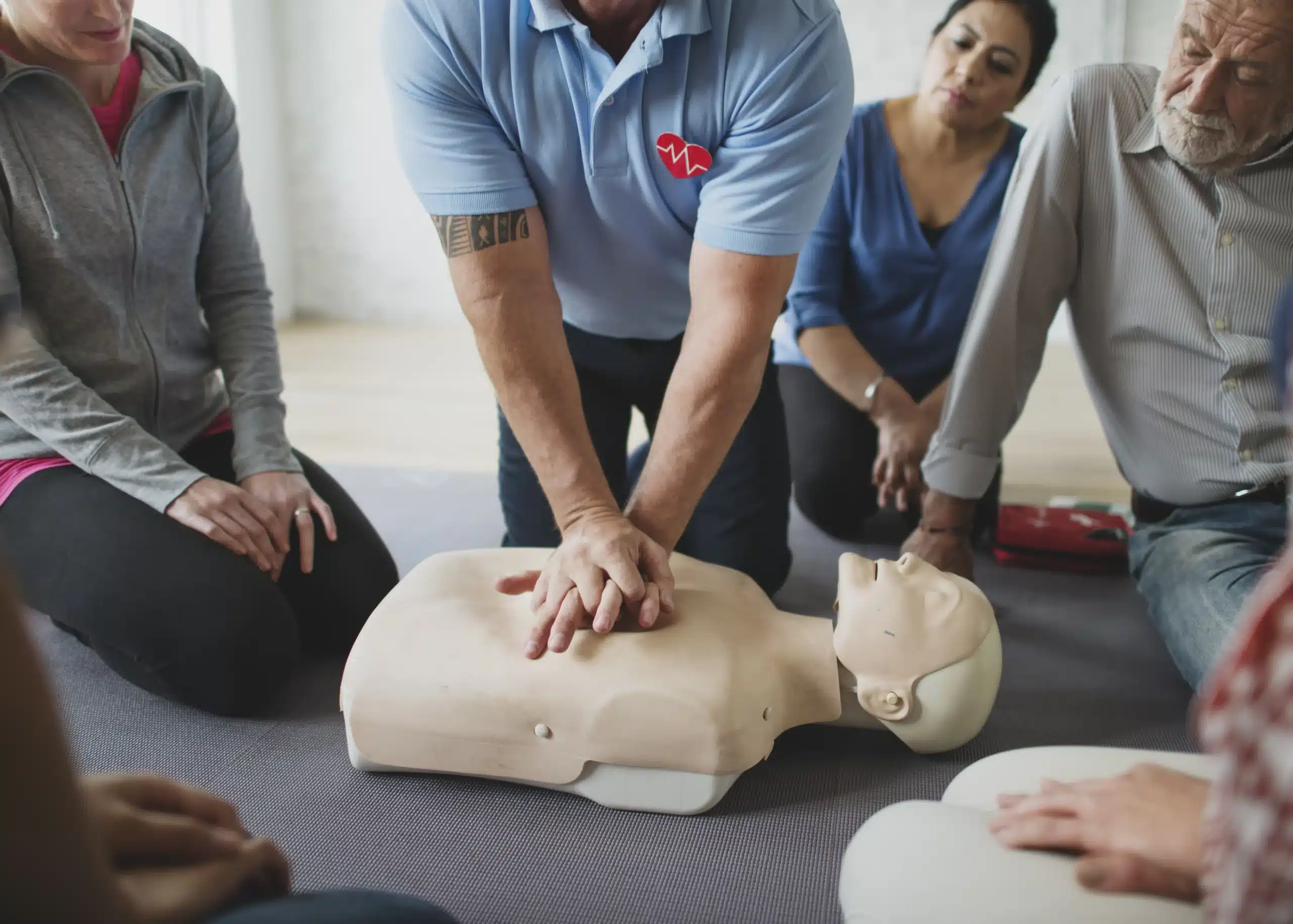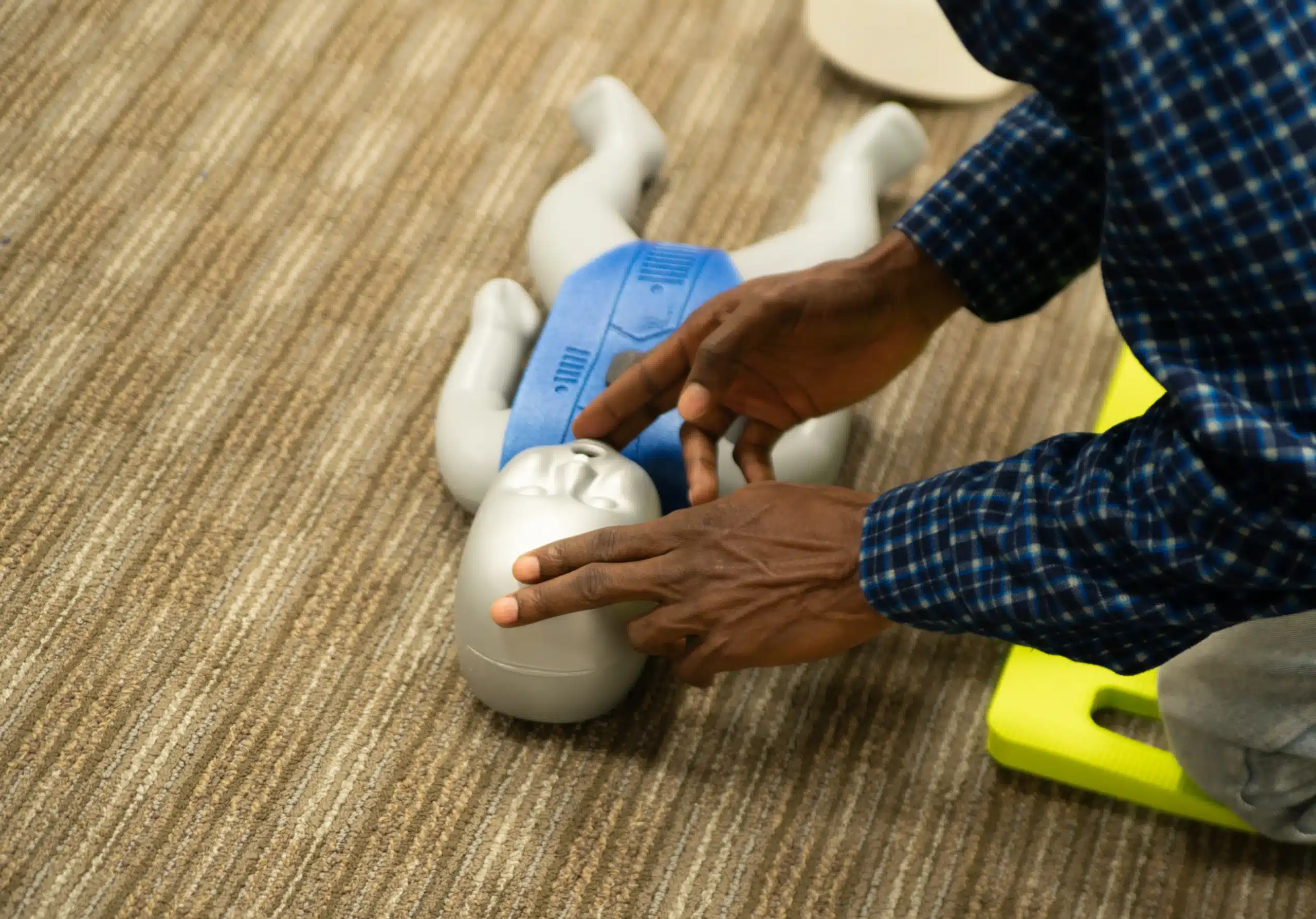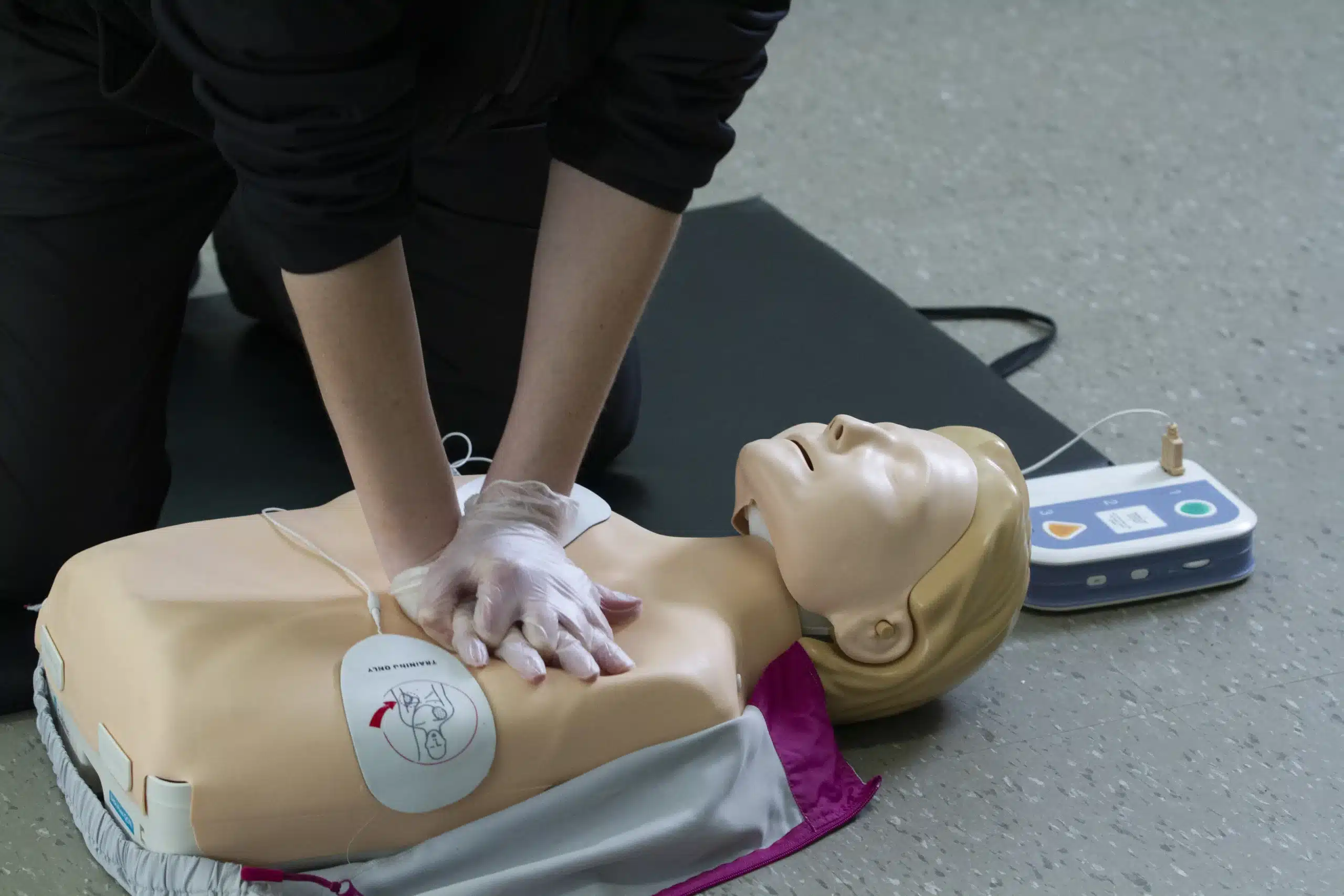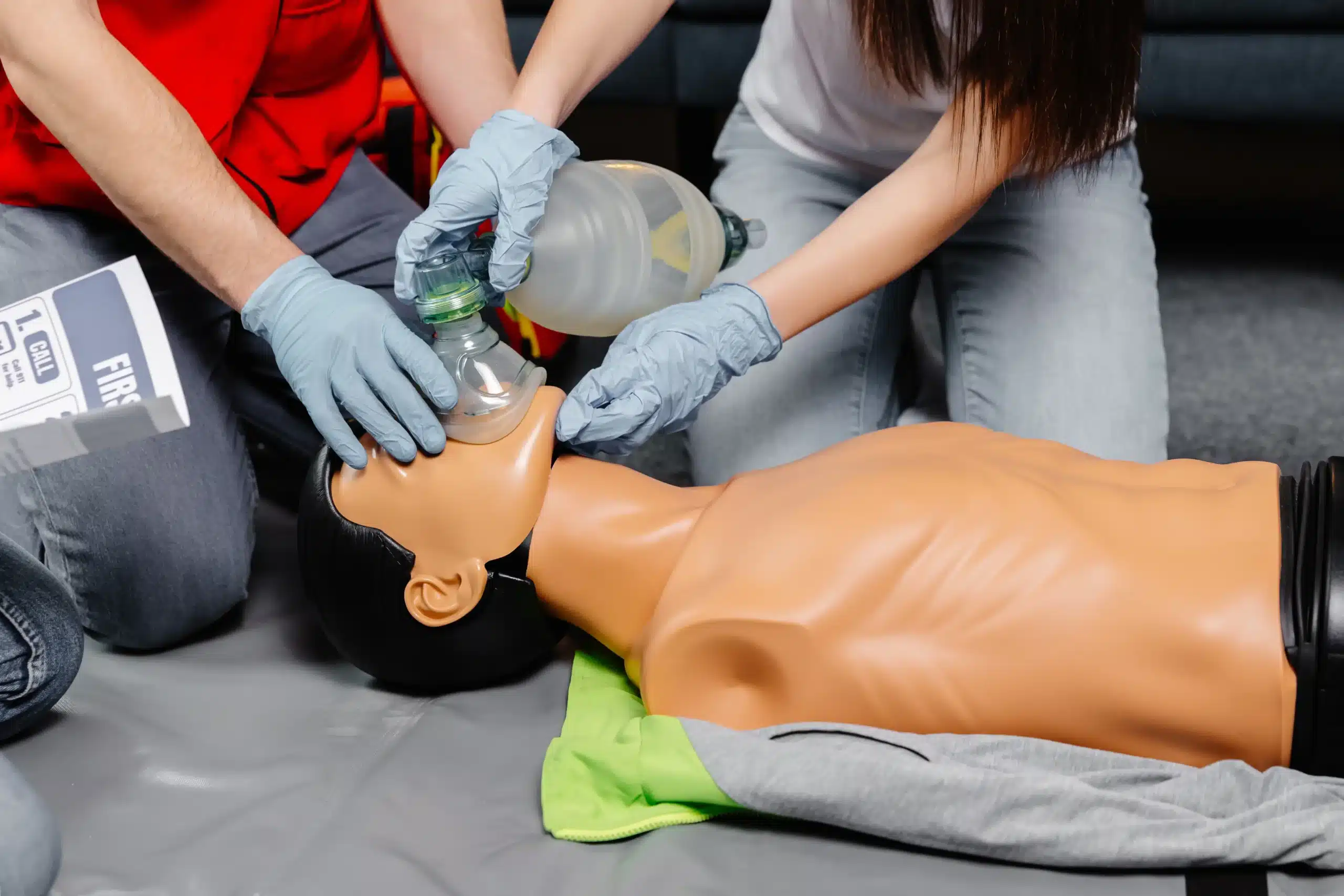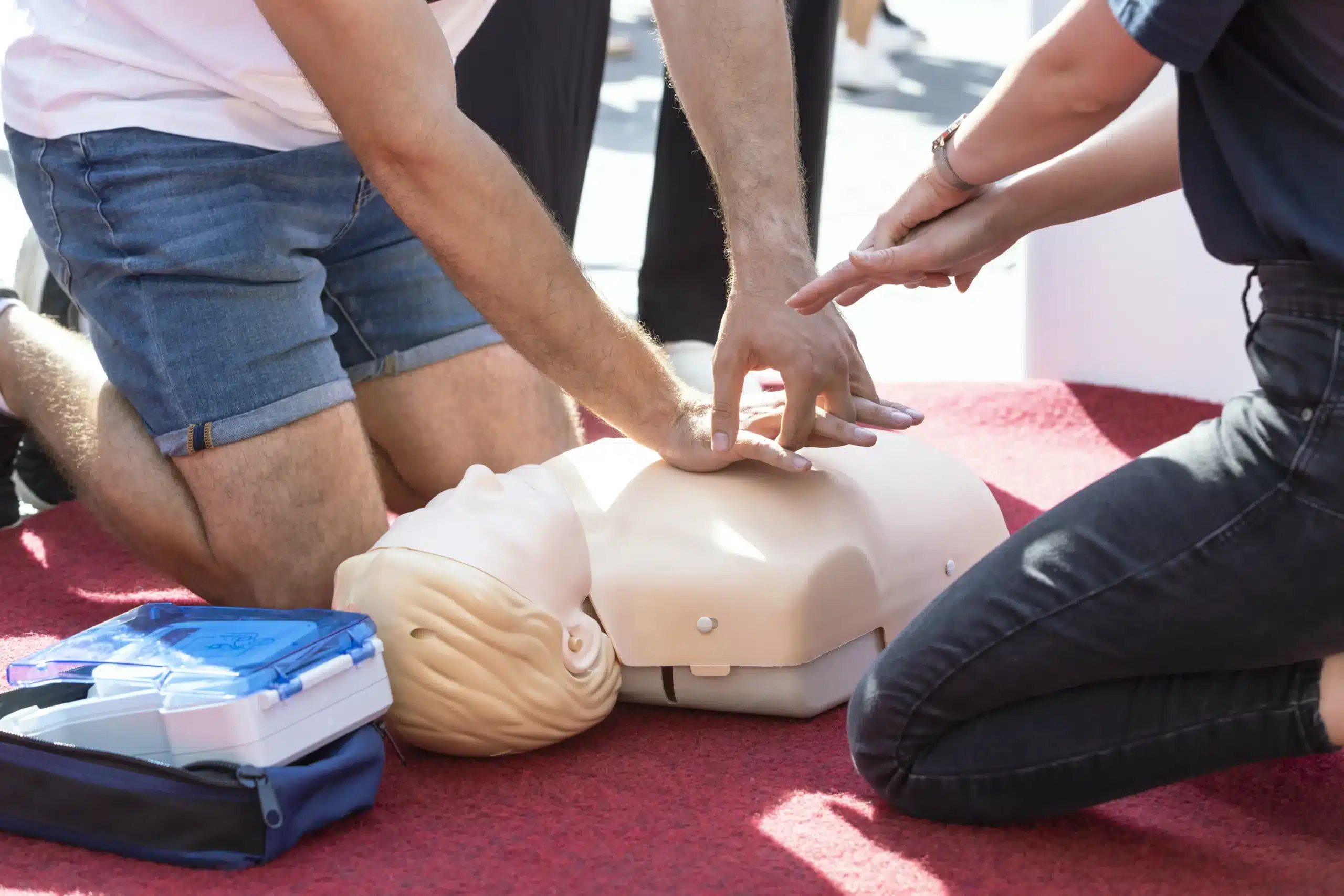Working in healthcare, you know how quickly things can change. Staying sharp with your BLS skills is key to providing the best possible care. But who has time to wade through endless options for recertification? If you’re looking for “BLS recertification near me,” this post is your go-to resource. We’ll cover everything from understanding the requirements to finding a course that fits your learning style and helps you confidently respond to emergencies.
Key Takeaways
- Maintain your life-saving skills: Regular BLS recertification ensures you’re equipped with the latest techniques and knowledge to confidently respond to medical emergencies. Choose a renewal method that complements your learning style and busy schedule.
- Select a reputable training provider: Seek out accredited providers known for experienced instructors, comprehensive course materials, and positive student feedback. Compare costs, locations, and available resources to find the best fit.
- Prioritize quality and convenience: Evaluate your learning preferences, schedule, and professional requirements when selecting a BLS recertification course. Invest in training that empowers you to provide effective care in critical situations.
What is BLS Recertification?
BLS (Basic Life Support) certification is essential for healthcare providers and other professionals who respond to medical emergencies. Like many certifications, BLS credentials expire, typically every two years. BLS recertification is simply the process of renewing your BLS skills and knowledge before your current certification lapses. You can usually recertify within 30 days after your expiration date, but it’s always best to plan and renew beforehand. The American Red Cross offers a range of BLS renewal and recertification courses to help healthcare professionals maintain their qualifications.
Key BLS Recertification Components
BLS recertification involves a few key steps. First, you’ll choose a course format—either online or in-person. Both options cover the same core material and extend your certification for another two years. After completing the coursework, you’ll take an exam to demonstrate your proficiency in BLS techniques. Once you pass, you’ll receive a new BLS certification card, proving your updated credentials. Save A Life CPR provides a helpful overview of the renewal process.
Why Stay Current?
Staying up-to-date with your BLS certification is crucial for several reasons. High-quality BLS is a fundamental link in the chain of survival for medical emergencies. When performed correctly, according to evidence-based guidelines, BLS can significantly improve patient outcomes. Regular practice of BLS skills is essential not only for providing effective care, but also for confidently passing the recertification exam. Review tips on how to avoid common mistakes during your BLS renewal. Beyond the exam, maintaining current BLS certification demonstrates your commitment to providing safe and effective care in emergencies.
Find BLS Recertification Providers Near You
Finding the right BLS recertification course shouldn’t be a struggle. Several reputable organizations and institutions offer convenient options. Here’s a rundown of common providers to help you start your search:
American Heart Association (AHA)
The American Heart Association offers various ways to renew your BLS certification, including online courses and in-person classes. This flexibility allows you to choose the learning environment that best suits your needs and schedule. The AHA provides resources like the 2020 BLS Provider Handbook to guide you.
American Red Cross
The American Red Cross also provides both online and in-person BLS recertification courses. Their streamlined process makes renewing your certification straightforward. Check their website for class schedules and availability in your area. They also offer helpful resources like videos demonstrating CPR techniques.
Campbell CPR Classes
Campbell CPR Classes is a woman-owned American Heart Association Training Center. They offer a range of AHA certification courses, including BLS, ACLS, PALS, CPR, and First Aid. Serving San Jose, Campbell, and Cupertino, they are committed to providing excellent customer service and the lowest prices in Santa Clara County, backed by a Low Price Guarantee. If you’re in the area, they’re a great option for convenient and affordable BLS recertification. You can find more information on their website or contact them directly.
Local Hospitals and Medical Centers
Many hospitals and medical centers offer BLS recertification courses for their staff and the wider community. These courses are often taught by experienced medical professionals and provide access to high-quality training equipment. Check with hospitals and clinics in your area to see what they offer. You might find helpful resources on hospital websites, such as articles on the importance of CPR training.
Community Colleges
Community colleges frequently offer BLS certification and recertification courses, often at a lower cost than private providers. This can be a budget-friendly option for those looking to renew their credentials. Check with your local community college for course schedules and registration information. Many community colleges have online course catalogs where you can search for healthcare training programs.
Compare BLS Recertification Formats
Choosing the right BLS recertification format depends on your learning style, schedule, and budget. Let’s break down the pros and cons of online, in-person, and hybrid options.
Online Courses: Pros and Cons
Online BLS recertification offers unparalleled convenience. You can renew your BLS certification from anywhere, anytime, fitting it into even the busiest schedules. This flexibility is a major plus for working professionals juggling multiple commitments. Plus, showing initiative by completing online certifications can impress potential employers. However, online learning isn’t for everyone. It requires self-discipline, and it can be easy to get sidetracked. Some students find it challenging to stay focused without the structure of a classroom. Carefully follow all requirements, such as completing modules in order or passing quizzes before moving on, to avoid delays in your recertification.
In-Person Training: Benefits and Drawbacks
In-person BLS recertification provides hands-on learning with direct instructor feedback. This format allows for real-time practice and clarification, ensuring you’re confident in your skills. The structured classroom environment can also benefit those who thrive on face-to-face interaction and learn best through demonstration. However, in-person training requires finding a class that fits your schedule and commuting to the training location. This can be a significant time commitment. Additionally, forgetting to schedule your in-person skills check or test can cause delays or even result in missing your recertification deadline. Plan and book your session in advance. For more information on in-person training, check out the American Red Cross BLS Renewal & Recertification page.
Hybrid Options: Flexibility and Practice
Hybrid BLS recertification, like the HeartCode BLS course, combines the best of both worlds. You complete the online coursework at your own pace, then attend a shorter, in-person skills session. This blended learning approach offers flexibility while still providing valuable hands-on practice and instructor interaction. It’s a great option for those who want the convenience of online learning but also value the benefits of in-person training. This format lets you learn the material on your own time and then demonstrate your skills under the guidance of a certified instructor.
Understand BLS Recertification Costs
Getting recertified in Basic Life Support (BLS) is an investment in your skills and career. Understanding the costs involved helps you budget effectively and find the best value.
Factors Influencing Pricing
Several factors affect BLS recertification costs. The course format matters—online courses are often more affordable than in-person training. Your location also plays a role, as prices can vary regionally. Additional factors, like course materials (such as a student manual) and provider fees, can also influence the total cost. Whether you’re renewing or retaking the full course will also impact the price. For example, providers like Berkeley CPR Classes offer a BLS course for around $120, which includes online coursework, the skills test, and your certification card.
Average Costs by Region
While prices fluctuate, expect to pay somewhere between $70 and $150 for BLS recertification. Metropolitan areas might have slightly higher prices. It’s always a good idea to compare prices from different providers in your area to find the best deal. Campbell CPR Classes offers a low price guarantee for classes in Campbell, San Jose, and Cupertino.
Quality vs. Cost
While cost is a factor, don’t compromise on the quality of your training. A lower price doesn’t always mean lower quality, but be sure the course meets the American Heart Association or American Red Cross guidelines. Look for training centers with experienced instructors, up-to-date materials, and positive student reviews. A high-quality course ensures you receive the best training and confidently maintain your skills. After all, your BLS certification signifies your readiness to respond effectively in critical situations.
BLS Recertification Process: Explained
Keeping your Basic Life Support (BLS) skills sharp is essential for any healthcare provider. Knowing the recertification process takes the stress out of staying current. Here’s a breakdown to guide you:
Renewal Frequency and Requirements
BLS certification is valid for two years. You can recertify up to 30 days after your certification lapses, giving you a small grace period. However, it’s always best to renew before your card expires to avoid any gaps in your qualifications. This ensures you’re always ready to respond to emergencies. Check with your employer or certifying organization for specific renewal requirements. Staying proactive keeps you prepared and compliant.
Steps to Recertify
The BLS recertification process is straightforward. First, choose a course format—online or in-person. Then, complete the required training, which covers core BLS skills and knowledge. After training, you’ll take an exam to demonstrate your competency. Once you pass, you’ll receive your updated BLS certification card. Simple as that. For convenient in-person training in Campbell, CA, check out the BLS courses offered by Campbell CPR Classes.
Required Documentation and Preparation
Before you start the recertification process, gather your current BLS provider card to confirm your previous certification. Also, take a few minutes to review the BLS guidelines and any updates since your last certification. This refresher will help you feel confident going into the course. Not all BLS recertification courses are created equal, so check what’s included in the training and what materials (if any) you need to bring. Planning and choosing a reputable provider like Campbell CPR Classes streamlines the entire process. We offer discount group classes and the lowest prices in Santa Clara County, backed by our Low Price Guarantee. Contact us today to learn more about our convenient and affordable BLS recertification options.
Choose the Right BLS Recertification Provider
Finding the right BLS recertification provider is crucial for a valuable learning experience. Here’s what to consider:
Credentials and Accreditation
First, confirm your provider’s credentials. Ensure they are accredited by a recognized organization like the American Heart Association (AHA). This accreditation guarantees you’re receiving training that meets industry standards and provides various renewal options, including online and in-person classes. For a comprehensive guide to AHA BLS recertification, check out this helpful resource.
Course Content and Materials
Next, understand what the course covers. Ask your provider about the included materials to ensure you’re receiving up-to-date information and developing the skills necessary for effective emergency response. Many BLS renewal courses include training materials, which often cover essential techniques and procedures. For example, Berkeley CPR Classes clearly outlines the materials provided in their courses.
Instructor Qualifications
Look into the instructors’ qualifications. Experienced, certified instructors significantly impact the quality of your training. The American Red Cross, for instance, has a long history of providing first aid, CPR, and AED training, demonstrating a high standard of instructor expertise. A provider’s history and reputation can offer insights into their instructors’ capabilities.
Student Reviews and Ratings
Finally, check student reviews and ratings. Previous students’ experiences offer valuable perspectives on the quality of instruction, course materials, and overall learning environment. Many training centers, like Heart & Stroke, collect student feedback through surveys, asking about course materials, instructional effectiveness, and overall satisfaction. These reviews can help you gauge whether the course aligns with your learning style and preferences.
Make an Informed Decision for Your BLS Recertification
Choosing the right BLS recertification course involves careful consideration of several factors. It’s more than just checking a box; it’s about ensuring you’re truly prepared for a life-saving situation. Here’s a breakdown of key elements to consider:
Assess Your Needs and Schedule
One of the biggest challenges in renewing your BLS certification is staying up-to-date with the latest guidelines and procedures. Take some time to think about your specific learning style. Do you prefer hands-on instruction or do you thrive in a self-paced environment? Consider your current knowledge and identify any areas where you might need a refresher. Also, realistically assess your schedule and how much time you can dedicate to recertification. Finding a course that aligns with your learning preferences and availability will make the process smoother and more effective.
Location and Convenience
The American Heart Association offers several ways to renew your BLS card, including convenient online courses and traditional in-person classes. The Red Cross also provides both online and in-person options, making it easier to fit recertification into your busy life. Think about what works best for you. Do you prefer the focused environment of a classroom setting, or would you rather learn at your own pace from the comfort of your home? Consider factors like commute time, class schedules, and online platform accessibility when making your decision. If you’re looking for in-person training in Campbell, CA, check out the options at Campbell CPR Classes. We offer a variety of courses to meet your needs.
Meet Professional Requirements
BLS training is essential for healthcare providers, and maintaining your certification demonstrates your commitment to providing high-quality care. Make sure the course you choose meets the requirements of your profession and licensing board. Look for courses that are accredited by reputable organizations like the AHA. Staying current with your BLS certification not only fulfills professional obligations but also ensures you’re equipped with the skills and knowledge to handle emergencies effectively. Review the dos and don’ts of AHA BLS renewal to avoid common errors and optimize your training experience. By taking the time to choose the right recertification course, you invest in both your career and your ability to provide critical care when it matters most.
Related Articles
- BLS Renewal in San Jose: Find the Right Course – Campbell CPR Classes
- BLS Certification in Cupertino for Healthcare Providers – Campbell CPR Classes
- HeartCode BLS in Campbell: Your Certification Guide – Campbell CPR Classes
- ACLS Renewal Campbell: Your Complete Guide – Campbell CPR Classes
- BLS HeartCode San Jose: Your Certification Guide – Campbell CPR Classes
Frequently Asked Questions
How often do I need to renew my BLS certification? BLS certification typically expires every two years. It’s best to recertify before your card expires to avoid any lapse in your credentials. You usually have a short grace period (around 30 days) after the expiration date to recertify, but don’t count on it!
What’s the difference between online and in-person BLS recertification? Both online and in-person BLS recertification cover the same core content and result in a valid two-year certification. Online courses offer flexibility, allowing you to learn at your own pace and on your own schedule. In-person classes provide hands-on training with direct instructor feedback. Consider your learning style and schedule when choosing the best format for you. A hybrid approach, combining online coursework with an in-person skills session, is also a popular option.
How much does BLS recertification cost? The cost of BLS recertification varies depending on several factors, including the course format (online or in-person), your location, and the training provider. Generally, you can expect to pay between $70 and $150. It’s wise to compare prices from different providers in your area to find the best value. Don’t choose based on price alone; ensure the course meets industry standards and is taught by qualified instructors.
Where can I find BLS recertification courses? Several organizations offer BLS recertification courses, including the American Heart Association, the American Red Cross, local hospitals and medical centers, and community colleges. You can also find private training providers like Campbell CPR Classes, which offer convenient and affordable options. When choosing a provider, check their credentials, course content, instructor qualifications, and student reviews.
What should I do to prepare for my BLS recertification? Before your BLS recertification, gather your current provider card and review the latest BLS guidelines. Familiarize yourself with any updates since your last certification. This refresher will help you feel prepared for the course and exam. Also, check with your chosen provider about any required materials or prerequisites. Planning ahead and choosing a reputable provider will make the recertification process smoother and more efficient.


